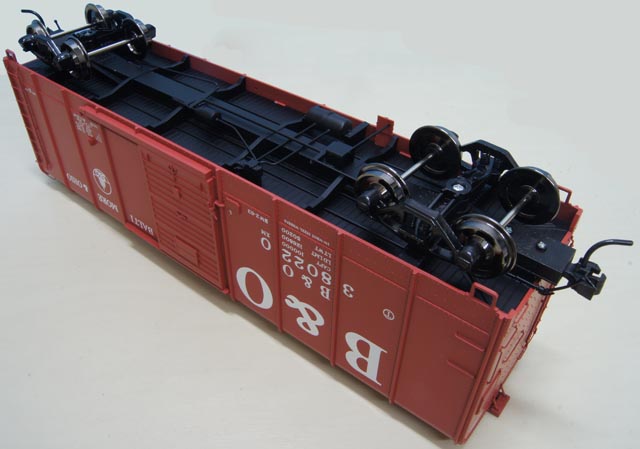I translate and show the contents of the dictionary I wrote in Japanese language. Some descriptions are not confident in the reliability. Thank you for your advice.
[cushion underframe] is a mechanism that greatly increases the front-rear stroke of the coupling, and increases the buffering capacity of the coupling device. It is equipped on box cars, reefers, gondolas, flat cars and cabooses that dislike shocks, and is understood for its couplers protruding from the car ends.
There are Sliding Center Sill Cushion (SCSC) and End-of-Car Cushion (EOCC).
In SCSC the Duryea System appeared first in 1927. A sliding sill that connects both ends of the coupler was installed in the center sill of the underframe, and impacts were absorbed by steel coil springs. For cabooses only, friction damping mechanisms were provided. In 1952 - 1955, Pullman-Standard supplied some SCSC cars with laminated rubber instead of steel coil under the name “Pullman-Standard Cushion Underframe”. In 1957, Hydra-Cushion, which combines friction and hydrauric, was put into practical use. It was followed by all-hydraulic Keystone Shock Control etc. and SCSC became popular with loading devices. For cabooses it was used until the end of SCSC units in the 1980s. Also it is called CTU = “Cushion Travel Underframe” or COCC = “Center of Car Cushion”.
In the latter EOCC, Halliburton Company’s FreightMaster, which was developed in 1960(?) is the first. Separate shock absorber units are provided at both ends to perform all damping hydraulically. Whereas SCSC works similarly in pushing buff and pulling draft, EOCC works a lot in buff and a little in draft. Compared to SCSC, although the structure is simple, excellent in maintainability, and lightweight, the initial ones were inferior in performance. P-S’s Hydroframe and ACF’s Freight-Saver (SCSC also exists) are known, and Keystone also manufactures EOCC. All new cars since the 1980s have adopted EOCC system. The centering spring changed from steel coil springs to gas springs containing inert nitrogen gas. In 1975, the AAR established an interchangeable recomended standard between the EOCC units and standard draft gears. The standard includes the M-921-B for general freight services (pre-load 100,000 pounds, established in 1989) and the M-921-D for auto carriers (pre-load 50,000 pounds, established in 1993).
In recent years, EOCCs are often called cushion devices.
The buffer capacity is generally represented by the moving travel stroke of the coupler, which generally takes 10-30 inches for SCSC units and 10, 15 and 18 inches for EOCC units. In later years, did the number of cars with EOCC increase and the traveling stroke shrank(?). See page 698-703 of the Car and Locomotive Cyclopedia 1997, page 28 of the MR Aug. 1967 issue (quoting the figure), page 3 of the Freight Cars Journal no.43 (PDF 4.4MB) , and TransPacific R.R. (Confirmation required / investigation ongoing)
In the 1960s, each railway wrote catchphrase (slogan) on the sides of the freight cars indicating the cushion underframe equipment. But it was rare that they used brands from manufacturers such as “Hydra-Cushion” (SP) or “Shock Control” (ATSF). Unique names were used. This is probably because various products were mixed. “Another Cushioned Load” (ACL), “Cushioned Ride” (GN), “Cushioned Cargo” (L&N), “Super Cushion Service” (SR), “Cushioned Load” (UP) and the like. However, many railroads simply wrote to as “Cushion Underframe”, “Cushioned Car” and “Cushion Service”. See a model collection.

It seems that the reason why the notation was abolished in the 1970s is that standardization of specifications and the spread of equipment have made it impossible to differentiate them.
In models, an O-scale boxcar with a movable mechanism was introduced in the MR Aug. 1967 issue. In 2008 Kadee released HO-scale 50-foot boxcars that replicated the functions of SCSC (see TransPacific R.R.). Walthers, Details West and Moloco sell various detail parts (dummy).
Related terms: [Duryea System] [Pullman-Standard Cushion Underframe] [Hydra-Cushion] [Shock Control] [FreightMaster] [Hydroframe] [Freight-Saver] [Cushion-Pak] [gas spring] [coupler] [draft gear] [loading device]
Kuriu, Kotaro
Kyoto, JAPAN

















